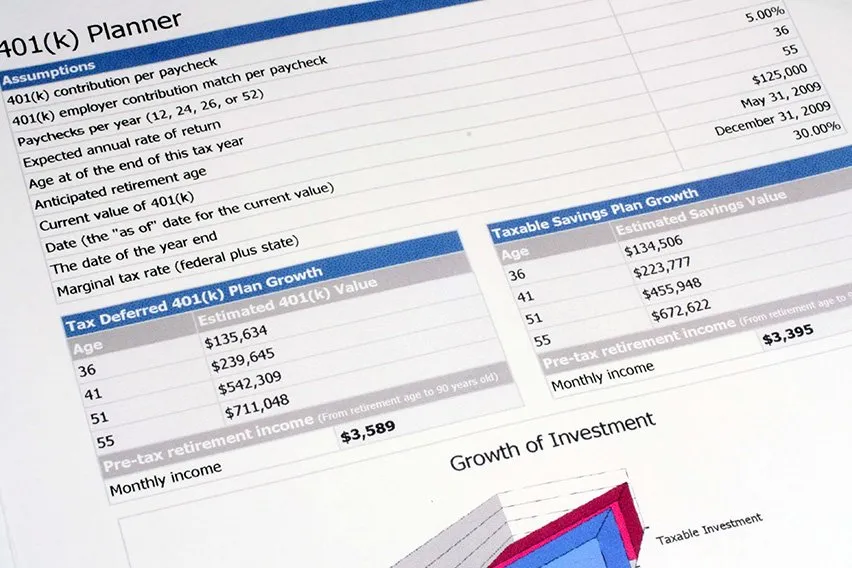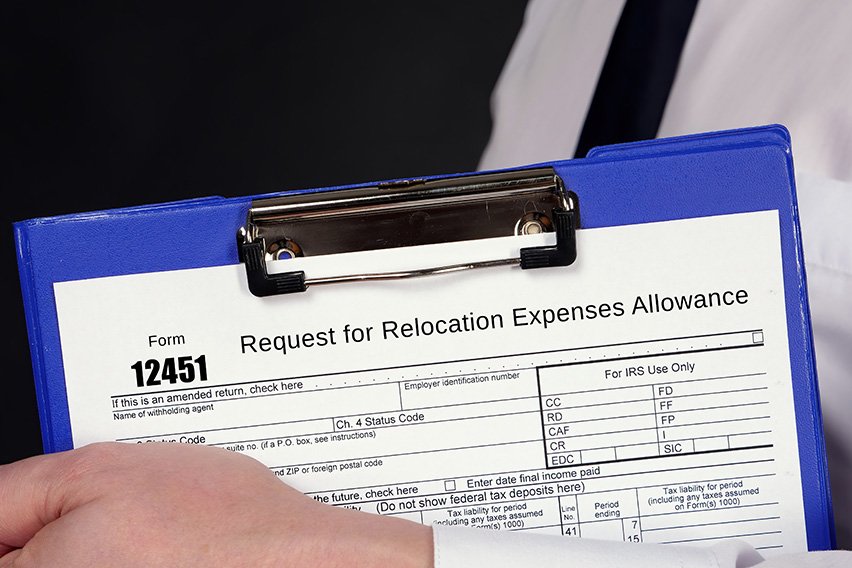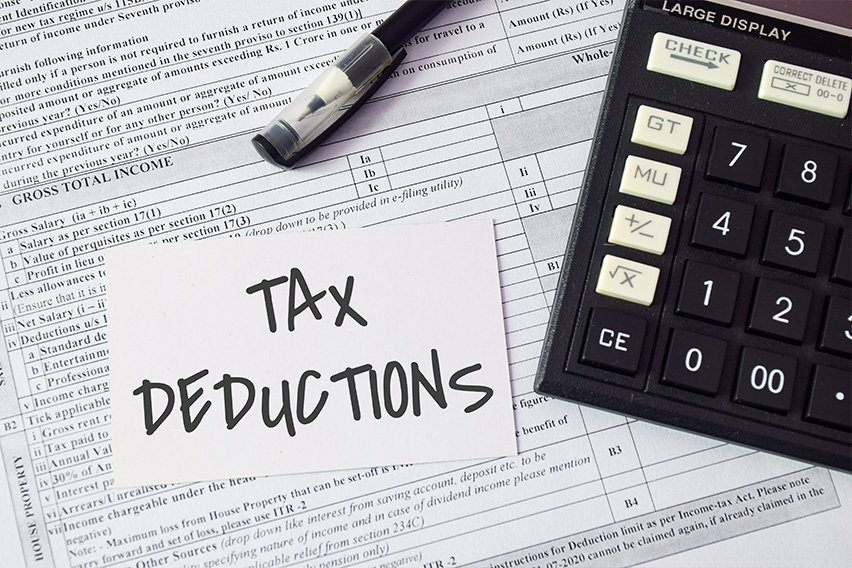How to Set Up a 401(k) in 4 Easy Steps (For Small Business)

A 401(k) is an employer-sponsored retirement plan that helps employees save for retirement by withdrawing pre-taxable income earnings from paychecks. Setting up a 401(k) for your small business can help attract and retain strong employees and can also offer tax benefits for small business owners. Learn more about the advantages of a 401(k) and explore 4 steps for starting a 401(k) for your company.
Key Takeaways
- A 401(k) is an employer-sponsored retirement savings plan for employees.
- A 401(k) can help attract talent and offer tax benefits to small businesses.
- Types of 401(k) plans include traditional, safe harbor, SIMPLE, and automatic.
- 401(k)s have a higher contribution limit than most other retirement savings options ($23,000 for 2024).
Table of Contents
- What Is a 401(k)?
- Choosing a Type of 401(k) Plan
- How To Set Up a 401(k) for Small Businesses
- Benefits of Offering a 401(k) to Employees
- Benefits of a 401(k) Plan Compared to Other Retirement Options
- Conclusion
- Frequently Asked Questions
What Is a 401(k)?
A 401(k) is a retirement savings plan organized by employers. It’s funded mostly by the employees through payroll deductions from wages before income taxes, but employers also have the option to contribute.
You can choose from many different 401(k) plan options, ranging from basic employee-only contributions to flexible plans and mandatory employer-contribution 401(k)s.

Choosing a Type of 401(k) Plan
There are several types of 401(k) plans to consider for your retirement account or small business:
Traditional 401(k)
In a traditional 401(k), contributions come from pre-tax earnings, which means you aren’t taxed on those contributions until you start accessing the 401(k). This system gives employers the flexibility to contribute or not contribute, but there is an annual cap for the total amount that can be contributed by employers and employees. Employer contributions can be subject to a vesting schedule.
Safe Harbor 401(k)
Safe harbor 401(k) plans require an employer to make a mandatory contribution to employee 401(k)s, but there are several variations. In ‘match’ plans, the employer contributes only when the employee does. In ‘non-elective’ plans, the employer always contributes, regardless of the amount of employee contributions. Employer contributions are fully vested when made, which means the employee has rights to employer contributions immediately.
Automatic 401(k)
An automatic 401(k) refers to the administration of a 401(k), in which employees are automatically enrolled in the company plan unless they choose to opt out. These types of plans may be traditional or safe harbor style 401(k)s.
SIMPLE 401(k)
A SIMPLE 401(k) plan is an effective and cost-efficient way for small businesses to offer retirement benefits to their employees. The employer is required to make employer contributions that are fully vested, which means an employee has ownership rights to the money. This type of 401(k) plan is available to employers with 100 or fewer employees who received at least $5,000 in compensation for the previous year.
How To Set Up a 401(k) for Small Business
Setting up a 401(k) for your small business is a relatively straightforward process. Once you’ve chosen your plan type, you’ll need to create a document that outlines all your plan details. Then you’ll need to organize a trust to manage your plan assets, keep track of contributions and investments for plan participants, and provide all the necessary information for your employees to enroll.
To set up a 401(k) investment account for your small business, just follow these 5 easy steps:
1. Prepare a 401(k) Plan Document
Start by creating a plan document that includes the type of 401(k) your business offers (traditional, safe harbor, SIMPLE, or automatic) and any other enrollment and contribution details. Plan documents often outline employee eligibility requirements, trustee information, contribution and distribution amounts, and in some cases, details about how contributions are deposited and how they might be invested.
2. Create a Trust to Hold Assets for the Plan
Once you’ve created a plan document, you’ll need to create a trust and assign a trustee to manage the 401(k). The trustee is the entity, person, or financial institution that manages the plan’s assets and ensures that they’re used responsibly (fiduciary duties). Depending on the details of your 401(k), both the employee and trustee may make decisions about how funds are invested, so it’s important for financial integrity that all details of the trust and trustee be outlined in the plan document.
3. Create a Recordkeeping System
Clear bookkeeping is essential to managing your business’s 401(k). Create a recordkeeping system that can manage contributions and distributions as well as all investment information including earnings and losses. You’ll need to file a 401(k) report at the end of each year, so having this information easily accessible is key to filing timely and accurate reports.
Depending on the type of 401(k) you choose, you may also be required to undergo additional federal government under-testing. Traditional 401(k) plans involve annual testing to make sure that employer contributions don’t disproportionately favor any particular employee or a company’s management or investment decisions.
4. Provide Plan Information to Eligible Participants
Regardless of the type of 401(k) you choose, you’ll need to provide eligible employees with a clear plan description. This is similar to the plan document but generally in a more simplified form called a Summary Plan Description, or SPD. The SPD details everything that employees need to know about their eligibility, plan type, contribution amounts, and how their money will be invested while it’s in the 401(k). It also includes information about distributions when the time comes.
Even if you choose an automatic 401(k) where employees are immediately enrolled, they must have access to an SPD as well as the option to opt-out.
Benefits of Offering a 401(k) to Employees
There are many benefits to offering a 401(k), including:
Attracting Great Employees
A 401(k) is a benefit system that helps attract and retain strong talent. Particularly when employees are looking for a long-term position, offering retirement benefits can be a key decision-making factor.
Promote Retirement
Secure retirement plans also help with healthy employee turnover. When employees feel supported in their retirement journey, it’s more appealing for them to retire when the time is right so new talent can join your team.
Receive Tax Benefits
401(k)s aren’t just a great fit for employees—they can also help you grow your business. In addition to attracting great talent, offering a 401(k) enables you to access certain tax benefits. There’s a $500 start-up and administration tax credit you’ll be eligible to receive, as well as other options for employers who match employee 401(k) contributions. Employer matching contributions are deductible for federal tax purposes to the extent of limits set by the IRS.
Benefits of a 401(k) Plan Compared to Other Retirement Options
There are several common retirement savings options, including a variety of IRAs, profit-sharing models, and mutual funds. Compared to these retirement accounts, a 401(k) offers several benefits:
Tax Benefits
401(k) contributions come from pre-tax earnings, allowing employees to defer these taxes until they start receiving 401(k) distributions. Since most people shift into a lower tax bracket when they retire, this amounts to greater tax savings in the long term.
Employer Contributions
401(k) plans that include an employer match of contributions tend to be one of the strongest incentives for employee hiring and retention. The option for employer contributions makes 401(k)s a great option for employees who can make the most of their retirement savings plan and for the small business owner who receives tax-deductible benefits for their contributions.
Higher Contribution Limits
Compared to most IRAs, 401(k)s have a higher annual contribution limit, so employees can save for retirement more quickly.
Flexibility
401(k)s have the option for employees to borrow some of the money they’ve contributed to their plan, which they’re unable to do with most other retirement savings plans like IRAs.

Conclusion
A 401(k) is a great way for employees to save for retirement and for small businesses to attract strong employees and save on taxes. Compared to other retirement savings plans, a 401(k) offers higher annual contribution amounts and gives employers the option to contribute to the plan as well.
Good expense tracking is key to managing your 401(k) and filing your business taxes. FreshBooks expense tracking software makes it easy to track contributions, investments, expenses, and more.
Try FreshBooks free to see how expense tracking software can help you manage a 401(k) and support you and your employees with your retirement income and savings.
FAQs About How To Set Up a 401(k)
Learn more about the advantages, drawbacks, and eligibility requirements with frequently asked questions about how to set up a 401(k) retirement savings plan.
What does a 401(k) do?
A 401(k) helps employees save money through an employer-organized retirement savings plan. Since 401(k) contributions come from pre-tax earnings, taxes are deferred until distributions are given. Most people are in a lower tax bracket during retirement, so this tax break adds up to even more savings in the long run.
What is a 401(k) retirement plan?
A 401(k) retirement plan is a retirement savings plan for employees that’s sponsored by employers. In most 401(k)s, employers withhold a given amount from each paycheck and add it to the 401(k). Some plans also include provisions for an employer match of contributions, helping employees save even more for retirement.
Can I set up a 401k on my own?
Yes, you can set up a 401(k) on your own as long as you meet the eligibility requirements. Even if your self-employed work only constitutes part-time employment, you’re still eligible to qualify for a 401(k) so long as you meet all other requirements.
What are the requirements to open a 401k?
To open a 401(k), your employer needs to offer a plan that you can enroll in. Different companies may offer different plans, so you’ll need to check with your employer about the plan benefits and specific eligibility requirements. Most plans have minimum requirements of 12 months of work with the company before enrolment.
What are the disadvantages of a 401 K plan?
Some 401(k) plans have limited investment options, so you may not have as much flexibility in your investment choices. They can also have extra fees if you remove the money early, so a 401(k) may not be the best fit for those seeking early retirement.
Why is 401k better than an IRA?
A 401(k) may be a better fit than an IRA because it usually has a higher annual contribution limit, allowing you to save more quickly. Some 401(k) plans also include options for employer contributions, so you may be able to save more that way as well.
About the author
Sandra Habiger is a Chartered Professional Accountant with a Bachelor’s Degree in Business Administration from the University of Washington. Sandra’s areas of focus include advising real estate agents, brokers, and investors. She supports small businesses in growing to their first six figures and beyond. Alongside her accounting practice, Sandra is a Money and Life Coach for women in business.
RELATED ARTICLES


 Can You Write-Off Expenses Before Incorporation? Certain Expenses, Yes
Can You Write-Off Expenses Before Incorporation? Certain Expenses, Yes Nanny Tax Deduction: Can You Write-Off Nanny Expenses?
Nanny Tax Deduction: Can You Write-Off Nanny Expenses? Can You Write-Off Relocation Expenses? Only U.S. Armed Forces Can
Can You Write-Off Relocation Expenses? Only U.S. Armed Forces Can Tax Deductions for Daycare Business: Top 10 Deductions
Tax Deductions for Daycare Business: Top 10 Deductions Tax Deductions for Handyman Business: What You Need to Know
Tax Deductions for Handyman Business: What You Need to Know Tax Deductions for Self-Employed Workers
Tax Deductions for Self-Employed Workers